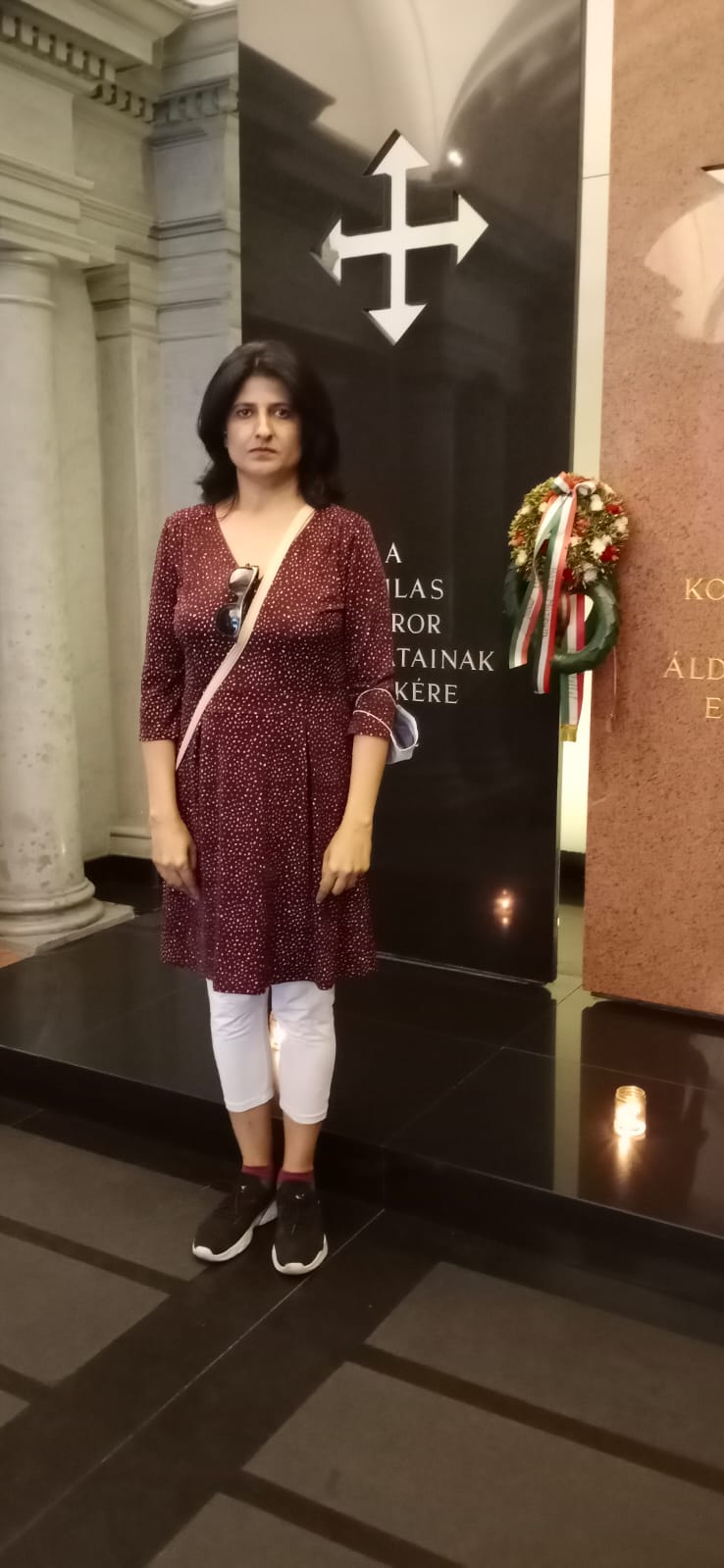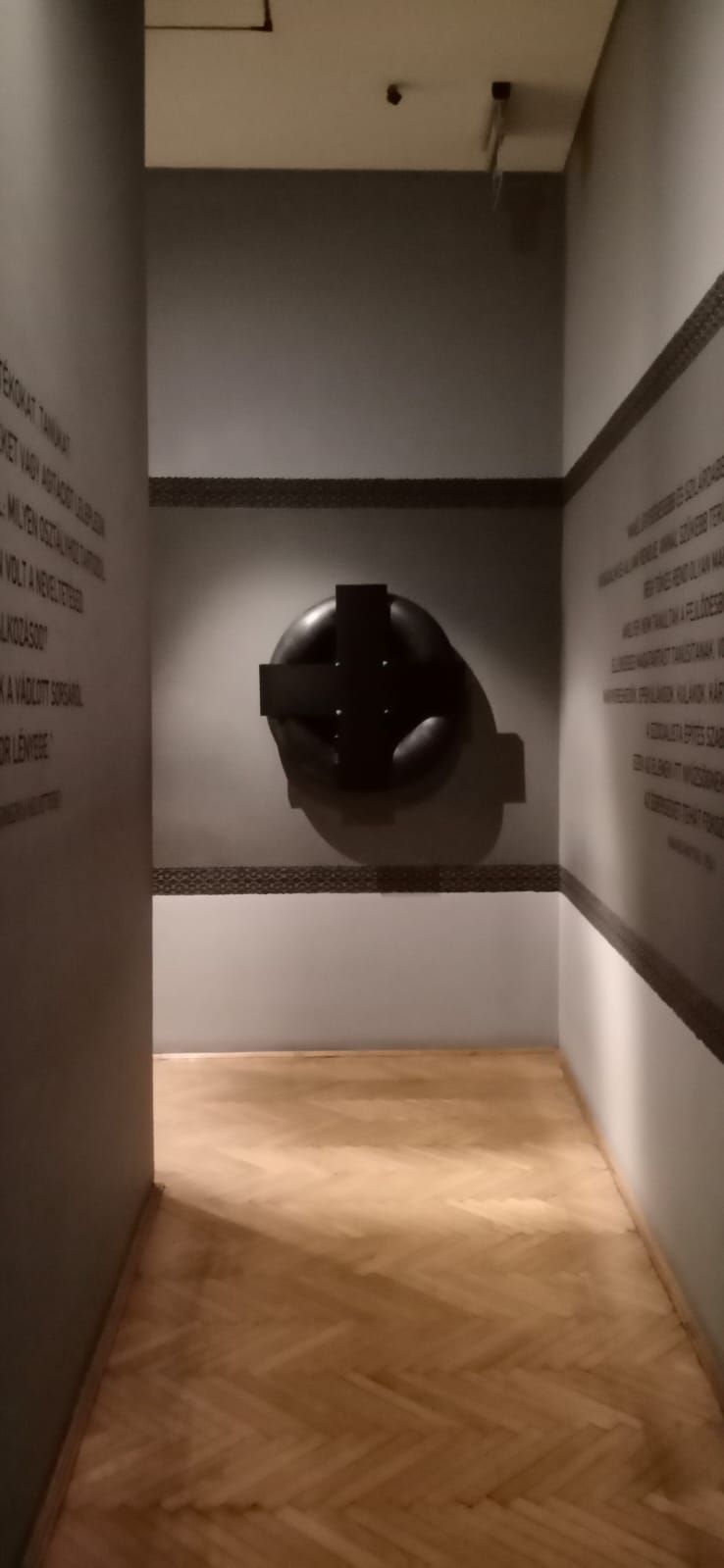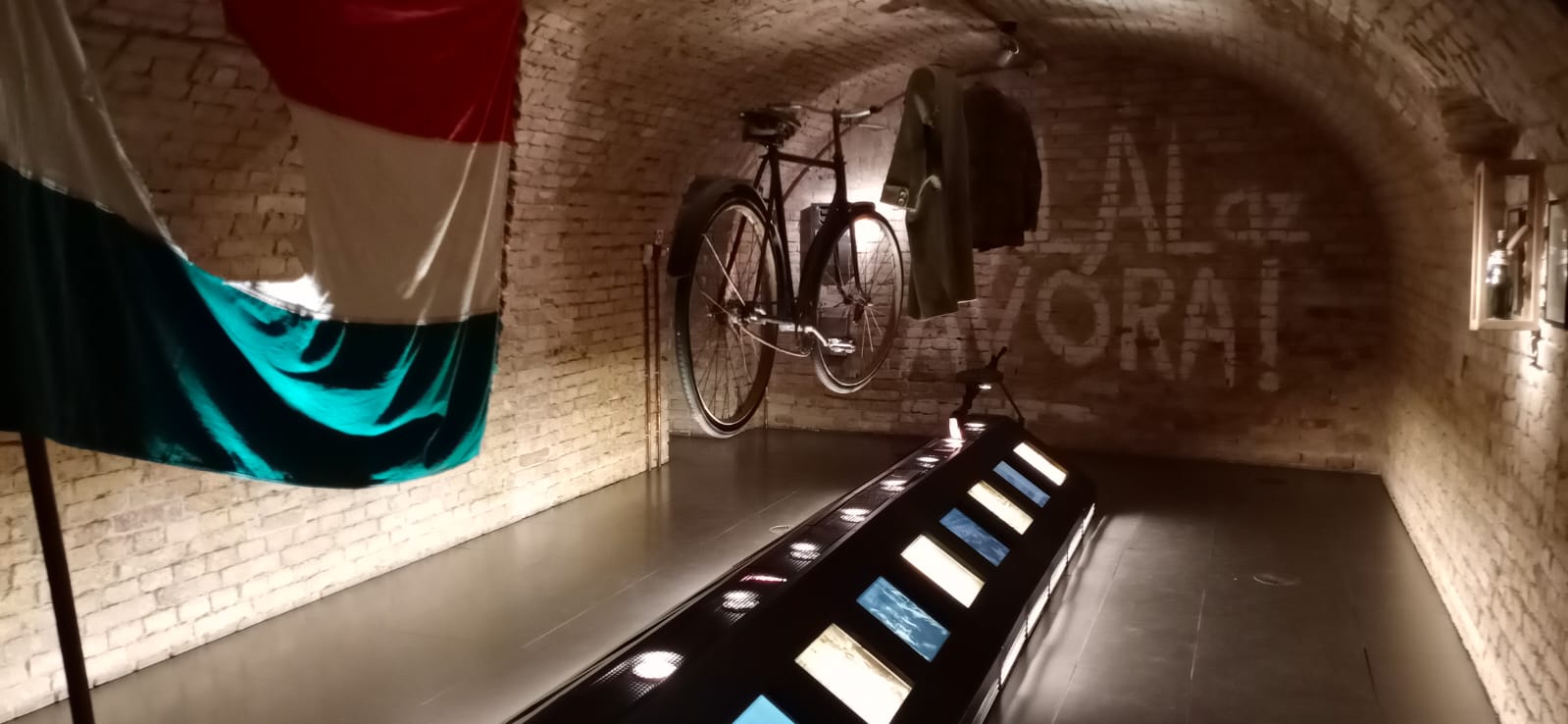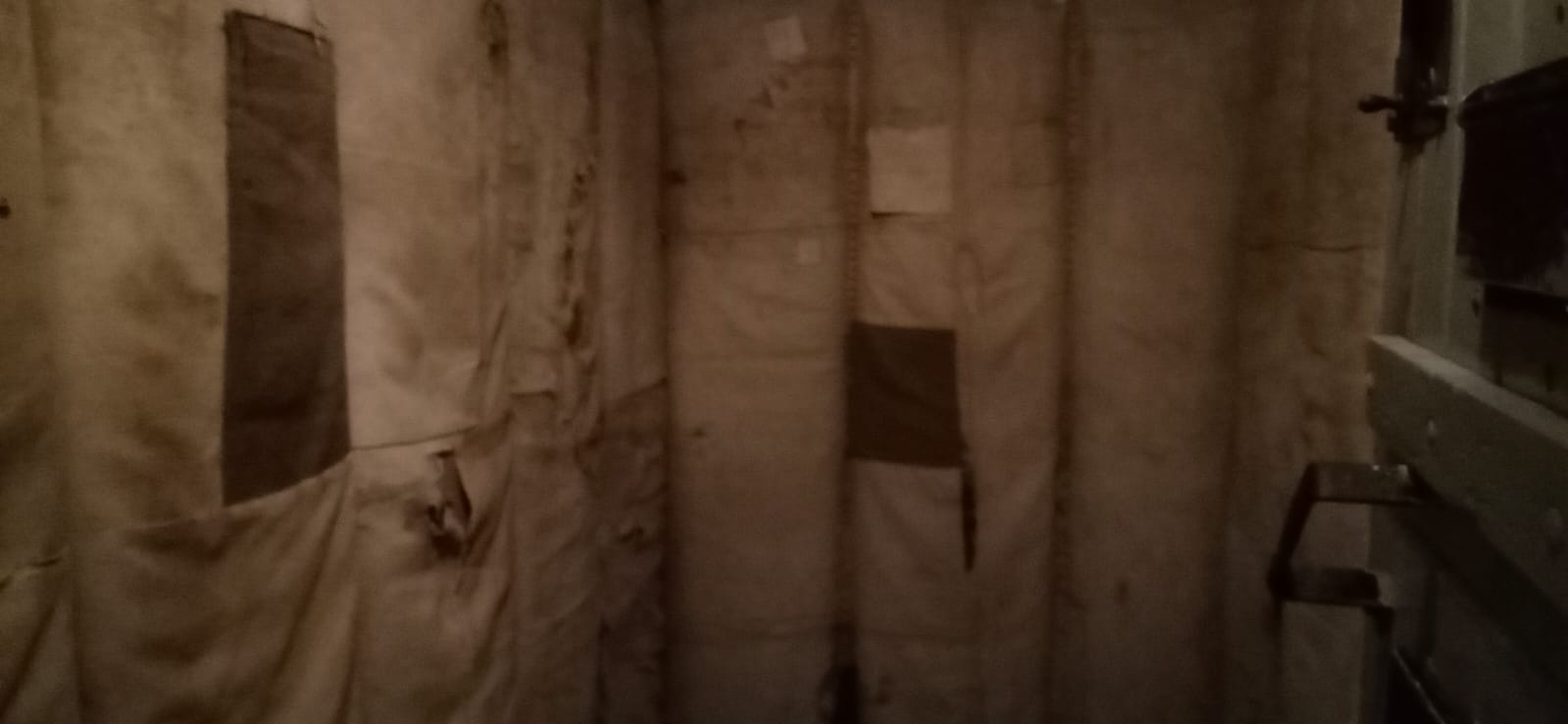By Shazia Anwer Cheema
The events related to World war I and World War II strongly influence European theatres, museums, art galleries, parks, and other public places. This psychology shows that living nations always ensure a link of the past with the present to build a better future.
European history tells us that during the era of World War II, Hungary went through two terrors regimes—The Nazis and the Soviets, leaving thousands of victims in the corridors of history. The number of victims was enough to lose faith in humanity.
While visiting Budapest this summer, I had a list of places where I could visualize and feel the past of Hungary that could help me to know the land as well as the people. Of course, my foremost destinations could be museums, arty galleries, and public parks.
The House of Terror Museum is the place where one can observe both terrible subjugating rules and the eras from where Hungary had gone through—the Nazis and the Soviets.

The museum exhibits what happened to Hungarians during the suppressive eras and documents pieces of bygone days under one roof.
In December 2000 ˝Public Foundation for Research on Central and Eastern European History And Society˝ decided to establish a place where terror history could be shown to the visitors as well as of forthcoming generations of Hungary. A building was purchased and renovated and finally completed in February 2002.
The permanent exhibitions telling the stories of terror and subjugation in the museum are spread over the Basemen, Ground Floor, First Floor, and Second Floor of the building.
The T-54 Tank placed in the main entrance (Ground-Floor) gives you the idea of the destructive power of metal and gunpowder that was used against Hungarians by the Soviets and the Nazis and this Tank gives an idea to visitors what the House of Terror Museum will offer to them—A brutal History of the genocide of Hungarians and the terror that engulfed Hungary during World War II period.
The T-54/55 tank series had been used to crush people inside cities because of its better maneuverability in the city areas. In the same entrance Hall where the Tank is placed, the painted walls of the Hall narrate the story of the irony of all the victims of Nazi and Soviet operations, unending series of faces looking at the right of you mocking on you for belonging fellow humans.
Budapest House of Terror has some unique ideas for horrifying visitors. Unlink other museums in Europe on a similar subject, House of Terror terrorize with soft emotions. Walls full of postcards written by victims to their loved ones are a crude way to jolt the human cognitive system. Unlike direct display of horror, Budapest’s House of Terror Museum terrorizes you with the idea of a human being ripping out of humanity. The documents putting people for death and torture and suffering are staring at you rather than gauging your empathy level. The grandeur of the display gives chilling feelings, pages after pages on all the four walls surrounding you at that very moment are enough to display the magnitude of humanity.
The dramaturgy behind Budapest house of terror is its life-size display of apparently nonscary objects. The feeling of horror is enveloped in small unnoticeable objects. A church-like display of cover letters and documents is enough to emphasize the importance of words in the course of history.
A wall covering the postcard written by the people during Nazi time reinforces that life does not give up easily. Even in a hopeless time like that human mind tend to love, care, remember and promise.
The human mind during Nazi time used fellow human beings to fuel their ambitions
The Horror corridor is symbolically made up of human fat (lard) is a symbol is it burns in the body in order to keep it running
Nazi burned human emotions ambitions and dreams the way the body burns fat. A long maze-like passage unfolding a new form of suffering on every turn is enough to swell. This maze made of fat leads a peasant quarter where national identity is torn and day to day middle-class lifestyle is upside down
A dark unlit room of a Nazi operator where decisions regarding citizens were made is telling tunnel mindset of Nazi ideology that same room leads to the basement and unlike above the surface darkness and evil prevails beneath the surface. Torture cells of prisoners uncomprehensive conditions, a makeshift gallows, where life can be taken with a blink of an eye. Rags hanging on the prison’s cell to minimize the shouting and cries due to the unperceivable torture
The Basement has several sections like Reconstructed Prison cells, Internment, All of the 1956 Revolution, Retaliation, Hall of Tears, Staircase—– Gallery of Victimizers and Emigration. Every section independently narrates the story of its own but gives a collective sense of what had been the life of a Hungarian and political culture of the 50s and what kind of terror the population of this era had gone through.
The First Floor is divided into several sections including Resettlement and Deportation, Terror corridor, Peasants, Anteroom of the Hungarian Political police, Room of Gabor Peter, Justice, Propaganda, Everyday Life, Treasury, Cardinal Mindszenty, and The Torture chamber.
 The Second Floor is comprised of sections including Double Occupation that gives the real story of double occupation—The Nazis and the Soviets. This section displays the two successive foreign occupations of Hungary. One part of the monitor wall depicts the genocidal Nazi régime: Hitler and the jubilant crowds, as well as the horrifying photographs of Bergen-Belsen, while on the other side you can see the Red Army, the signing of the Molotov-Ribbentrop Pact, and military parades along Red Square. There are some shots of the Hungarian Army’s participation in the war against the Soviet Union, as well as of the siege of Budapest. The pictures on the walls of the hall portray the devastation caused by the war in Hungary.
The Second Floor is comprised of sections including Double Occupation that gives the real story of double occupation—The Nazis and the Soviets. This section displays the two successive foreign occupations of Hungary. One part of the monitor wall depicts the genocidal Nazi régime: Hitler and the jubilant crowds, as well as the horrifying photographs of Bergen-Belsen, while on the other side you can see the Red Army, the signing of the Molotov-Ribbentrop Pact, and military parades along Red Square. There are some shots of the Hungarian Army’s participation in the war against the Soviet Union, as well as of the siege of Budapest. The pictures on the walls of the hall portray the devastation caused by the war in Hungary.
Other sections include Passage of the Hungarian Nazis –Arrowcross Party, Hungarian Nazis — Arrowcross Party, Gulag, Changing Cloths, The Fifties, Room of Soviet Advisors, and the Resistance.
My experience of visiting the House of Terror Museum is that one should read the history of Hungary, particularly of its position in World War II if you really wish to feel more and learn more. Entering this museum empty-minded having no historical background can create confusion of what to see and how to look at objects because every hall is divided into several sub-halls and every sub-hall (section) narrate a totally different part of the history. It is better to spend two-plus days to see the full exhibition.
Empires and dictators have been ruling the world since the known human history but how many countries or nations gather, document, and display their history of subjugation is an important search that will tell us who really respect Freedom or who takes freedom as granted.
Do we have any museum in the Indo-Pak subcontinent where we can know human tools of subjugations (names of people like Gabor Peter)?
Do we have any museum that narrates the story of how did British Raj terrorize, subjugate and kill faceless and nameless citizens of our lands and how did the British Raj abuse our culture, people, youth, generations, and the most of all—our true History?
Should we not have such museums if we really wish to transfer our past to our forthcoming generations? We tried to construct “Bab-e-Pakistan” at Walton Railway Station in Lahore to document the history of the partition but this project has never been completed although the third decade has started from the date its inauguration stone was installed.
Note: Writer Shazia Anwer Cheema is a Prague-based foreign affairs expert who writes for national and international media. She is a doctoral student. Researcher in semiotics and philosophy of communication at Charles University in Prague. She heads the DND Think Tank. She can be reached at her: Twitter @ShaziaAnwerCh Email: shaziaanwer@yahoo.com













